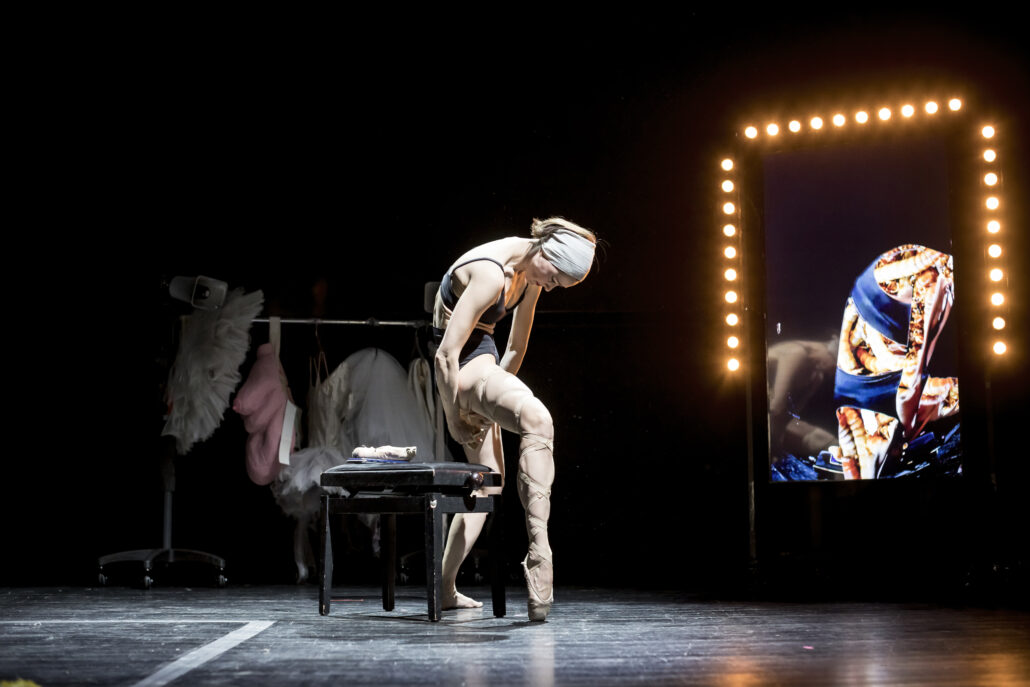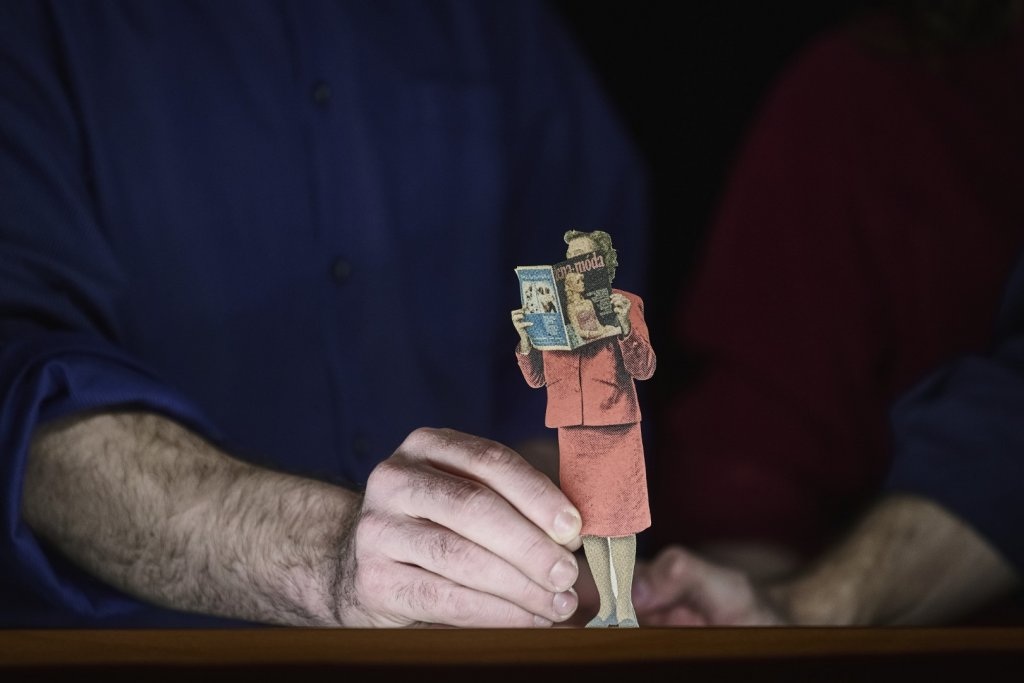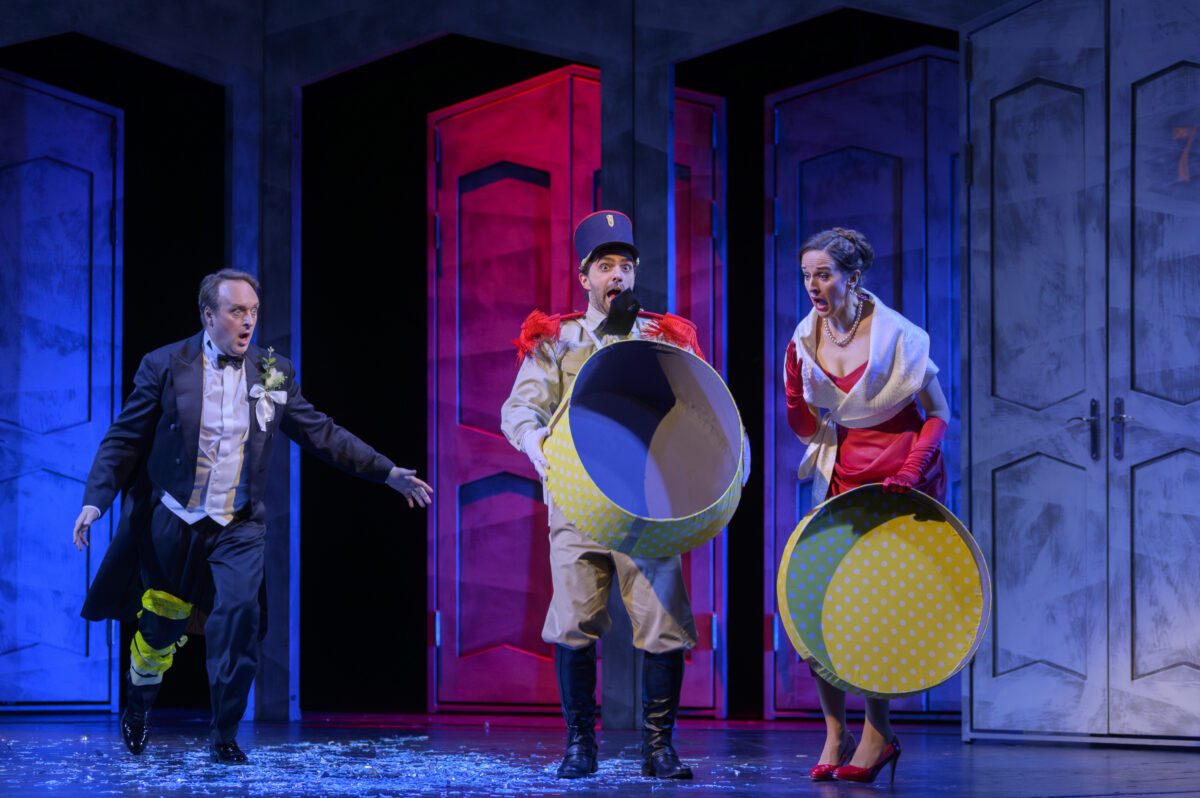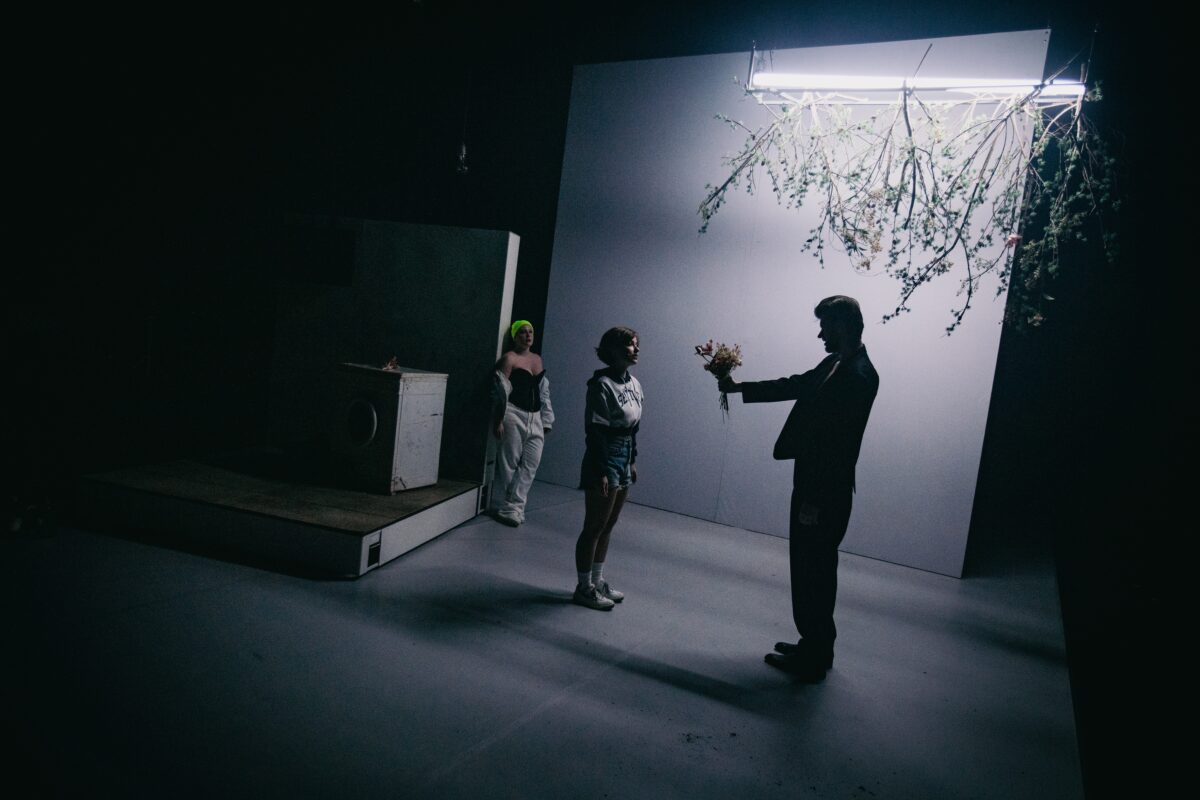Interview with MIŘENKA ČECHOVÁ
From Traumas to Personal Safe Space
Miřenka Čechová is a performer, choreographer, director and writer and one of the most distinctive figures in Czech experimental dance and physical theatre. Active both domestically and abroad, she is the co-founder of the dance companies Spitfire Company (with Petr Boháč) and Tantehorse (with Radim Vizváry) and founder of the international festival Zero Point. She has many nationally and internationally award-winning performances to her credit as a director and choreographer and has also directed several operas. She has lectured at universities in the United States (American University in Washington D.C., the University of Tampa in Florida, Stephens College in Missouri and Mercersburg Academy in Pennsylvania). In 2012, she won the Washington Post’s Best of Contemporary Dance Award and the Herald Angel Award at the Edinburgh Fringe Festival for her performance S/He is Nancy Joe. This award-winning performance blends narrative and visual elements from comic books and a unique style of street ballet fusing elements of hip-hop, popping and locking and tutting with contemporary dance and classical ballet. In her documentary autobiographical series Invisible, which focuses on female artists, she is working with docu-dance (documentary dance theatre), through which she communicates individual and collective traumas and turning points in history.
What does she do for the emerging artists? Why does she prefer directing in a tandem? And how do women fare in the current Czech theatre environment?
Since 2018, you have been involved in the performance research laboratory TANTELAB, a collaboration between your company Tantehorse and the Czech Academy of Sciences. The lab is specifically for emerging artists from contemporary dance, experimental theatre and performance art. Why is this important? How do you approach this process?
This intensive laboratory is intended to be a de facto bridge between finishing your studies and the beginning of your career. It usually lasts between a year and a year-and-a-half, depending on the need. I also invite visiting lecturers from all sorts of different creative industries and the social sciences. Each lab is focused on a specific topic and the performers learn how to immerse themselves in, find sources and various inspirations and then we have them inject their own authorship into the work. I always work through this thoroughly with them and try to direct them towards their own uniqueness. Part of this process is also an interaction with the audience. We try to create a safe space for this, where the emerging artists can present their work without the pressure of completeness or firm clarity. These performances are publicly accessible and they take place in many different spaces – not just in theatres, but also in the reading room of the Czech Academy of Sciences reading room or the National Gallery. Some of them have led to the creation of full scale performances at Pragovka, or Ponec – the dance venue. Many interesting collaborations have begun in the labs, several companies were created and some former participants are now established, well-known artists.
In recent years, you have often directed in tandem with other makers, such as Markéta Vacovská, Tereza Vejvodová, Dominika Špalková and Petr Boháč. You also often collaborate with and consult the philosopher Alice Koubová. What has led you to adopt this collaborative style?
The director’s position is often seen as the top of the hierarchy. After some painful attempts to smash this position of absolute power, which is often assigned to men, I decided to disrupt this engrained notion and join forces in an equal creative dialogue. I think it has a beneficial effect on the performance because all of my and my partner’s thoughts are meticulously reflected on and discussed in dialogue. Nothing is allowed to stay trapped in our inner worlds. The whole experience then becomes more democratic and process-driven. It becomes more about the process and less about the product. I think that’s missing when the director is seen as a “genius”. The other positive aspect is shared responsibility. As a parent, I can’t give theatre 100% as I did before, so I had to change the way I work. That includes sharing both creativity and responsibility.

In your book and show Baletky (Ballet Girls), you talk about dealing with trauma you experienced during your studies at the dance conservatoire. You describe an environment rife with humiliation, excessive pressure to perform, body shaming and other experiences that can be physically and emotionally damaging for a young person. How do you work with trauma without damaging yourself? How did you deal with some of the negative comments from industry colleagues after the release of Ballet Girls?
In approaching work with trauma, I apply a perspective from philosopher Alice Koubová. She describes trauma as a gap a person must face within themselves. The gap is like an empty performance; you have to work extremely hard to fill it. It’s a very difficult process; sometimes you fall deeper into the abyss and enter a hell where you may re-experience the trauma, but this is the only way to start the healing process. I think it’s very important to work through trauma like this first, before communicating it creatively, to embrace it rather than drown in it. That was the case with Ballet Girls. As for the negative and sometimes almost hateful reactions on social media, it was re-traumatising for me. It forced me to return to painful memories. The same people were telling me the same things, but I was no longer a thirteen-year-old girl, I was a grown woman. Since then, I’ve had a rather negative relationship with social media. The algorithms often give more space to the negative and this makes social media toxic. I can’t avoid it in my professional life, but I seldom use it personally.
In addition to your personal trauma, your work often deals with collective trauma and turning points. We see this in the performance ZEĎ aneb jak jsem vyrůstal za železnou oponou (THE WALL or How I Grew Up Behind the Iron Curtain) at DRAK Theatre, for example, or Osudety (Sudeten Fate), a theatrical experiment at the intersection of site-specific performance and escape room, which deals with the re-settlement of the Sudetenland after the post-war forced expulsion of Germans. What drew you to work with these historical topics?
I co-directed ZEĎ aneb jak jsem vyrůstal za železnou oponou (THE WALL or How I Grew Up behind the Iron Curtain) with Dominika Špalková. We were inspired by the book Zeď (The Wall) by the internationally renowned author Petr Sís. We thought it was important to introduce the topic of life under socialism and the fall of the Iron Curtain to children. Personally, this process led me to me create a link to this historical event, and brought up some distant memories. Even though we were working with a documented historical event, this topic was very personal to me.
categories
Dance / Interdisciplinary / Interview

 Learn
Learn







